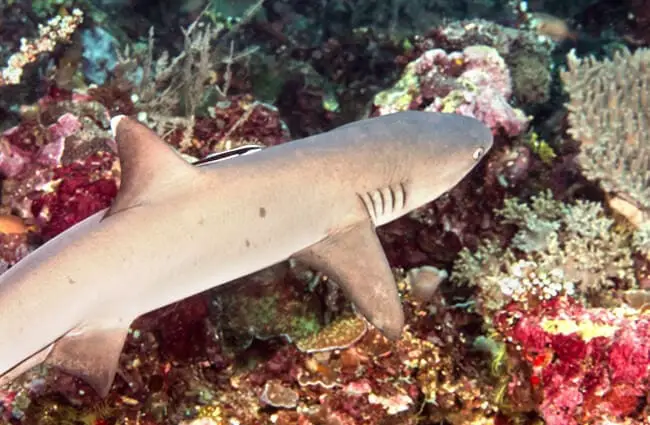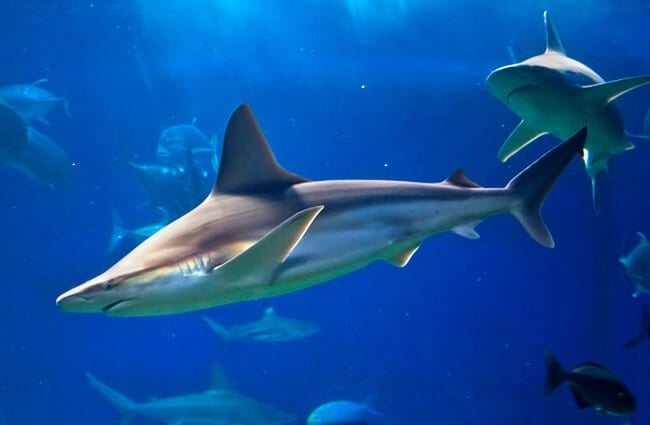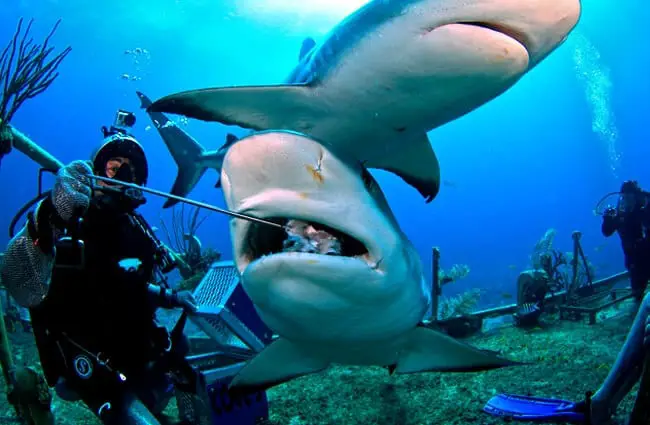The world’s coral reefs are bustling metropolises of marine life, and among the most important inhabitants are reef sharks. Often misunderstood, these sleek predators play a vital role in maintaining the health and balance of these underwater ecosystems. This article delves into the fascinating world of reef sharks, exploring their biology, behavior, ecological significance, and interactions with humans.

What are Reef Sharks?
The term “reef shark” isn’t a single species but encompasses several species of sharks that commonly inhabit coral reef environments. These include the Caribbean reef shark, whitetip reef shark, blacktip reef shark, and grey reef shark, among others. Generally, reef sharks are characterized by their relatively small size, streamlined bodies, and a preference for shallow, tropical waters. They are active predators but are typically not considered dangerous to humans unless provoked or mistaken for prey.
Species Spotlight
Let’s briefly look at some of the most common reef shark species:
- Caribbean Reef Shark (Carcharhinus perezi): Found throughout the Caribbean Sea and western Atlantic Ocean, these sharks are known for their social behavior and often gather in groups.
- Whitetip Reef Shark (Triaenodon obesus): Common in the Indo-Pacific, whitetip reef sharks are nocturnal hunters and often rest on the reef floor during the day. They are easily identified by the white tips on their dorsal and caudal fins.
- Blacktip Reef Shark (Carcharhinus melanopterus): Widespread throughout the Indo-Pacific, blacktip reef sharks are known for their distinctive black tips on their fins and their habit of swimming in schools.
- Grey Reef Shark (Carcharhinus amblyrhynchos): Found in the Indo-Pacific, grey reef sharks are known for their alertness and sometimes display a warning display, bending their body when they feel threatened.
Habitat and Distribution
Reef sharks are exclusively found in tropical and subtropical waters, primarily in coral reef ecosystems. These reefs provide shelter, breeding grounds, and abundant food sources. The majority of species are concentrated in the Indo-Pacific region, which boasts the highest coral reef diversity globally. However, Caribbean reef sharks are prevalent in the Caribbean Sea and adjacent waters. Reef sharks generally prefer depths of up to 30 meters, but can venture into deeper waters in search of food. They require clear water and healthy coral reefs for optimal survival.

Evolutionary History
Sharks, as a group, have a remarkably long evolutionary history, dating back over 400 million years. Reef sharks specifically belong to the requiem shark family (Carcharhinidae), which emerged during the Cretaceous period. Their evolutionary path has been shaped by the need to adapt to the complex environments of coral reefs. Over time, they have developed streamlined bodies, acute senses, and specialized hunting techniques to thrive in these ecosystems. Fossil evidence suggests that early reef sharks were similar in form to modern species, indicating a relatively stable evolutionary trajectory.
Diet and Hunting Strategies
Reef sharks are opportunistic predators with a varied diet. Their primary food sources include fish, crustaceans, cephalopods, and occasionally sea snakes. Blacktip reef sharks are known to feed on schooling fish near the surface, while whitetip reef sharks often hunt at night, preying on bottom-dwelling creatures. Grey reef sharks will readily take advantage of opportunities such as injured fish or those distracted by other predators. They employ several hunting strategies, including ambush predation, active chasing, and scavenging. Their keen senses, particularly their ability to detect electrical fields produced by other animals, aid in locating prey even in murky waters.

Reproduction and Life Cycle
Most reef shark species are viviparous, meaning they give birth to live young. The gestation period varies depending on the species, typically lasting between nine and 18 months. Litters usually consist of one to six pups, which are born fully developed and capable of independent hunting. Young reef sharks reach sexual maturity at around five to ten years of age. Their slow reproductive rate makes them particularly vulnerable to overfishing and habitat loss. Unlike some other shark species, reef sharks do not exhibit complex mating rituals. Males often pursue females aggressively, and mating can occur at any time of year.
Ecological Role and Interactions
Reef sharks are apex predators, playing a crucial role in maintaining the health and balance of coral reef ecosystems. By preying on sick, weak, and injured fish, they help to control disease outbreaks and prevent the spread of parasites. They also influence the behavior of their prey, preventing overgrazing of coral reefs. The absence of reef sharks can lead to a decline in reef health and biodiversity. Reef sharks interact with a wide range of other marine animals, including fish, crustaceans, cephalopods, and even larger predators. They often compete with other sharks for food and territory.
Encountering Reef Sharks in the Wild
If you are fortunate enough to encounter a reef shark while snorkeling or diving, remember to remain calm and avoid making sudden movements. Do not attempt to touch or feed the shark, as this can disrupt its natural behavior and potentially lead to an attack. Maintain a respectful distance and allow the shark to swim freely. Reef sharks are generally not aggressive towards humans, but they may become defensive if they feel threatened. If a shark approaches you, maintain eye contact and slowly back away.

Reef Sharks and Human Interactions
Historically, reef sharks have been hunted for their fins, meat, and liver oil. Today, overfishing and habitat destruction pose the greatest threats to their survival. Many reef shark populations are declining, and some species are listed as endangered or vulnerable. Tourism, particularly shark diving, can provide economic incentives for conservation. However, it is important to ensure that such activities are conducted responsibly and sustainably. By reducing pollution, protecting coral reefs, and promoting sustainable fishing practices, we can help to ensure the long-term survival of these magnificent creatures.
Conservation Status and Threats
The conservation status of reef sharks varies depending on the species. The IUCN Red List classifies several species as Near Threatened, Vulnerable, or Endangered. Major threats include overfishing (both targeted and as bycatch), habitat degradation (due to coral bleaching, pollution, and coastal development), and the increasing demand for shark fins. Effective conservation strategies require international cooperation, stricter fishing regulations, and the establishment of marine protected areas.
Reef Sharks in Captivity
Several public aquariums maintain reef shark exhibits. Providing adequate space, water quality, and enrichment is crucial for the well-being of captive sharks. Diet should consist of a variety of fresh or frozen fish and invertebrates. Regular veterinary checkups and monitoring of behavior are also essential. Captive breeding programs can help to supplement wild populations and promote conservation awareness.

Fascinating Facts about Reef Sharks
- Some reef shark species can detect electrical fields produced by other animals, even in murky water.
- Whitetip reef sharks often rest on the reef floor during the day and hunt at night.
- Caribbean reef sharks are known to form social groups and hunt cooperatively.
- Grey reef sharks exhibit a characteristic warning display, bending their body when they feel threatened.
- Reef sharks play a crucial role in maintaining the health and biodiversity of coral reef ecosystems.

Reef sharks are truly remarkable creatures, playing a vital role in the health and biodiversity of coral reef ecosystems. By understanding their biology, behavior, and ecological significance, we can better appreciate and protect these magnificent predators for generations to come. Their continued survival depends on our commitment to conservation and sustainable practices.

![Red Angus Closeup of a beautiful Red Angus cowPhoto by: U.S. Department of Agriculture [pubic domain]https://creativecommons.org/licenses/by/2.0/](https://animals.net/wp-content/uploads/2020/03/Red-Angus-4-238x178.jpg)




![Red Angus Closeup of a beautiful Red Angus cowPhoto by: U.S. Department of Agriculture [pubic domain]https://creativecommons.org/licenses/by/2.0/](https://animals.net/wp-content/uploads/2020/03/Red-Angus-4-100x75.jpg)

